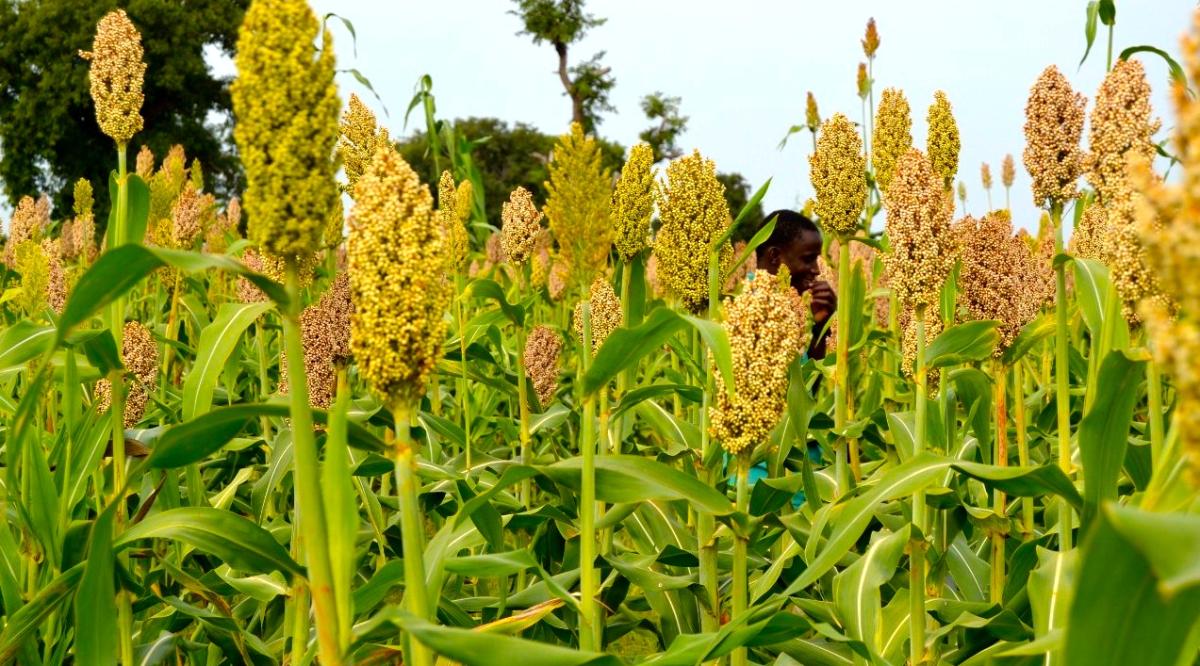 Researchers at the University of Copenhagen have launched a new type of the maize-like crop sorghum that no longer becomes toxic in prolonged drought, offering the hope that thousands of farmers may no longer need to discard the crop as a potential killer or suffer millions of shillings in livestock fatalities.
Researchers at the University of Copenhagen have launched a new type of the maize-like crop sorghum that no longer becomes toxic in prolonged drought, offering the hope that thousands of farmers may no longer need to discard the crop as a potential killer or suffer millions of shillings in livestock fatalities.
Sorghum, has traditionally been adopted by farmers in the dry areas of Eastern parts of Kenya due to its ability to withstand drought. However, when exposed to prolonged drought, the sorghum plant produces large amounts of dhurrin, which forms toxic cyanide, commonly known as Prussic acid.
Farmers thus face a big dilemma. During a period of drought when they most need food for their animals, they are often forced to discard their sorghum because they do not know how poisonous it is and how much the animals can eat without suffering from cyanide poisoning. In East Africa, for example , where the sorghum has been recording increased uptake as weather pattern changes, farmers lose hundreds of millions of shillings each year as a result:
"The fact that the sorghum plant produces large amounts of the natural cyanogenic glycoside dhurrin when exposed to drought is a serious problem for farmers in many parts of the world. Dhurrin breaks down to form toxic cyanide or Prussic acid when an animal eats the plant. So when there is a drought and most need for forage, the farmer can no longer use the crop and it goes to waste," said Professor of Plant Biochemistry at the University of Copenhagen, Birger Lindberg Møller, during the unveiling of the new crop.
The new sorghum plant is unable to produce Prussic acid. Instead of using genetic engineering, the researchers used plant breeding and advanced biochemical and molecular biological screening methods: "This is a breakthrough which, globally, can be very important for agriculture, especially in warmer areas where climate change is expected to cause longer and more frequent periods of drought in future.
Especially in Africa, where farmers cannot afford to buy new forage in periods of drought, it is a huge step forwards that they will now be able to feed their animals with sorghum they can grow themselves," says Birger Lindberg Moller. This breakthrough comes at a time when farmers have been suffering the effects of prolonged and repeated droughts, which significantly impact animal feeds by making pasture unavailable, and have seen the prices of commercial feeds hitting an all time high in the last two years.
This has seen farmers turn on drought resistant crops like sorghum, but which are then turning out to be dangerous. Last year, some 250 farmers in Eastern province and parts of Coast province lost 15million worth of livestock after feeding them with dried sorghum that had cyanide. The drought had been declared a national disaster with where over 5 million livestock died.